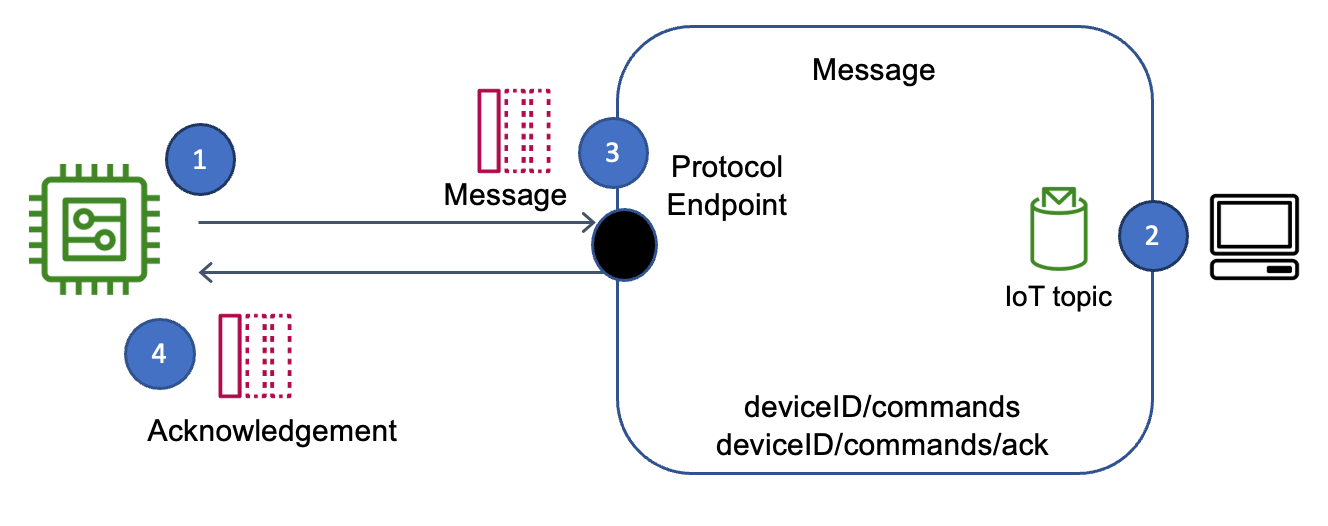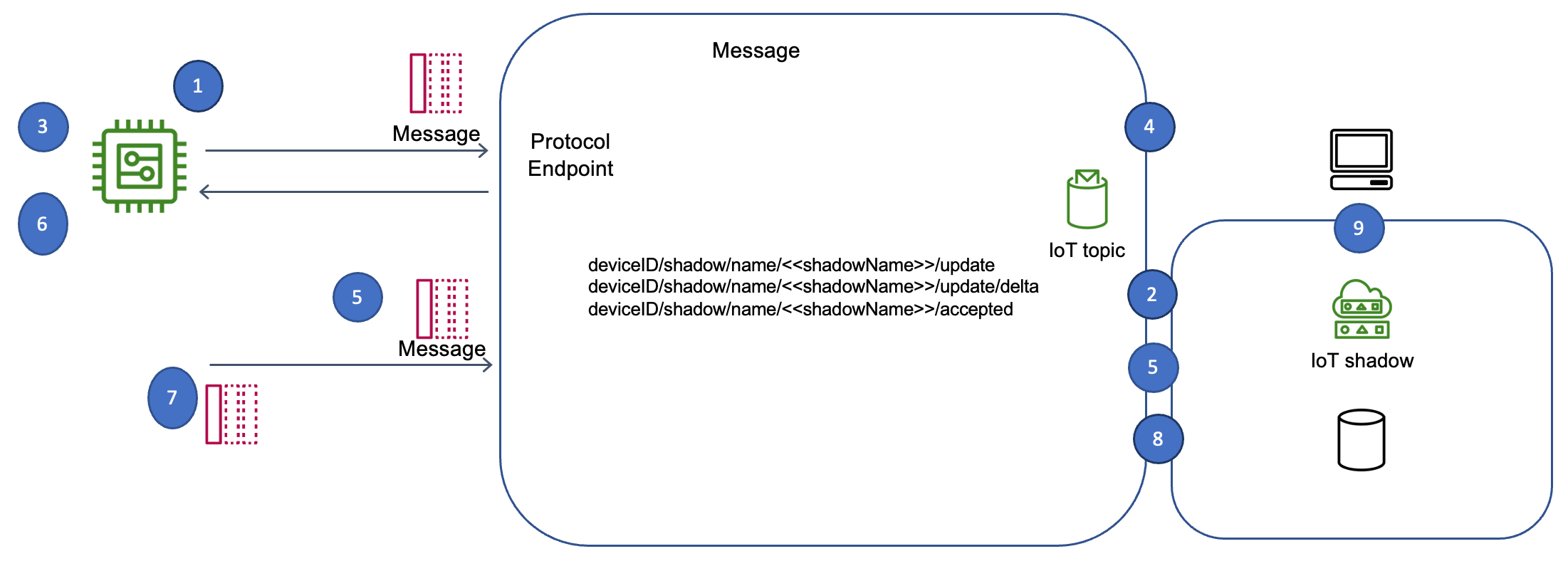Send IoT Commands Over The Internet: Your Ultimate Guide
Can you truly control your devices from anywhere in the world? The answer is a resounding yes, thanks to the power of the Internet of Things (IoT) and the ability to send commands remotely.
The ability to manage and interact with devices remotely has revolutionized how we interact with technology. From controlling your home's lighting from your phone to monitoring industrial equipment across vast distances, the possibilities are endless. This article delves into the core methods and technologies that enable this seamless remote control, providing a comprehensive guide to mastering the art of sending commands to your IoT devices over the internet.
The core concept revolves around establishing a communication pathway between your control device (e.g., a smartphone, laptop, or a cloud-based platform) and your IoT device (e.g., a Raspberry Pi, an Arduino, or any other embedded system). This pathway is secured by the internet.
- Ahad Sajal Divorce Fallout Latest Updates You Need To Know
- Diva Flawless The Rise Of The Viral Sensation Explained
One of the foundational aspects of remote control is the configuration of your IoT device itself. This involves establishing its connectivity to the internet. Many devices, like Raspberry Pis and Arduinos, can be connected via Wi-Fi or Ethernet. More advanced IoT devices may have integrated cellular capabilities.
Once the device is connected, the next step involves setting up a mechanism to receive and execute commands. This frequently involves the use of APIs (Application Programming Interfaces) that allow you to send structured instructions to the device. These APIs can be as simple as sending a specific URL or more complex, employing protocols like MQTT (Message Queuing Telemetry Transport) for secure and reliable communication.
A key element in this process is the role of cloud platforms or specialized applications. Many IoT devices are designed to integrate with these platforms, such as Amazon Web Services (AWS) IoT Core, Microsoft Azure IoT Hub, or Google Cloud IoT Core. These platforms provide infrastructure for device management, security, and scalability. They also offer tools for creating and managing commands that you can send to your devices. Consider the example of AWS IoT Core. To manage commands for your devices, you will first need to create a command resource from the command hub of the AWS IoT console. Alternatively, you can utilize the CreateCommand control plane API operation for this purpose. When creating the command, you must always provide a payload.
- Anne Burrell Husband Net Worth Wedding Details You Need To Know
- Unveiling The Truth Social Medias Dark Side Subhashree Sahus Story
However, the method is not that difficult. Setting up port forwarding on your router to forward requests from the internet to the pis local IP address is key to remote control. Also, one of the most common and convenient ways to send commands over the internet is by establishing a remote command line connection to your raspberry pi using SSH (Secure Shell). With just a few steps, you can securely log in to your pis terminal from anywhere and control it as if you are right in front of it.
To further enhance security, consider implementing VPNs (Virtual Private Networks). A VPN allows you to establish a secure, encrypted connection to your home or office network, effectively creating a private tunnel through the public internet. This is a viable option to connect IoT devices behind a firewall.
Virtual Network Computing (VNC) is another potential solution. VNC lets you control your IoT devices that are behind firewalls. Using another computer or mobile device, you can see and manage a remote desktop.
Email can also be used to relay commands to the IoT. Consider the following scenario. The pi receives emails over the internet (IoT) network and controls the led according to the data received in the body of the email. The emails that send commands to control the led can be sent from any device like laptop, pc, tablet or smart phone.
To send a command to a device using a platform like ClearBlade IoT Core, you would typically follow these steps:
- Go to the ClearBlade IoT Core consoles registries page.
- Click the device registry ID.
- In the left registry menu, click devices.
- Click the device ID you want to send the command.
- At the top right of the page, click the ellipsis (⋮) and choose send command.
When you start a command execution from the AWS IoT console, or use the startcommandexecution API to send the command to your device using the commands request topic. If the request is successful, the command execution status changes to created.
Understanding the underlying concepts is crucial. Each device in an IoT network has sensors that collect data. For example, every device will have a sensor to track its physical state. To reiterate, the Internet of Things (IoT) refers to the physical objects that are connected to the internet, therefore to all other physical objects.
Another aspect is the implementation of Voice Control. The internet of things (iot) has paved the way for new methods to manage smart devices, and voice command has become a standout. Systems like Alexa from amazon and googles assistant have popularized this concept, letting users command their devices using speech.
Lets discuss MQTT. Many developers who dont want to work with cloud services opt for MQTT. As a lightweight protocol, it can work very well on low-powered IoT devices. MQTT brokers, often running on cloud servers, are a central point for message exchange. Devices subscribe to specific topics to receive data or commands. Publishing a message is a very simple task and requires an MQTT client library.
Another aspect is how to send commands to your devices. You can send remote commands to iot over the internet from outside your network. To remotely access, control and manage your iot devices from outside of our home or office network over the internet, allowing you to remotely manage your iot device from anywhere.
For instance, the SocketXP is a cloud-based IoT remote access and device management solution that provides SSH access to remotely located IoT devices. This approach is particularly useful for scenarios where devices are located behind NAT routers or firewalls.
A crucial consideration is how to handle situations when a device is offline when a command is issued. In many situations, commands are only valid for a brief period. The command needs to be ignored if it's received too late.
Another example, to control an LED you could send an email to a Raspberry Pi and read the content of the email. The emails content will decide if the led is on or off. The Raspberry Pi then interprets the email body and controls the LED accordingly. The emails to pass the commands can be sent from any device, like laptop, pc, tablet, or smart phone.



Detail Author:
- Name : Harmon Bode
- Username : brandt.rice
- Email : rohan.ebony@hills.com
- Birthdate : 1993-04-07
- Address : 24788 Kuhn River Lake Tremaine, MN 76012
- Phone : +16094459719
- Company : Ratke, Stanton and Murray
- Job : Photographic Developer
- Bio : Dolor sint perferendis non ut. Voluptatem adipisci earum necessitatibus assumenda aut unde. Sunt in aut recusandae.
Socials
tiktok:
- url : https://tiktok.com/@elizabeth7580
- username : elizabeth7580
- bio : Est recusandae non qui. Quidem quis non hic cum.
- followers : 5406
- following : 1138
twitter:
- url : https://twitter.com/elizabeth_kovacek
- username : elizabeth_kovacek
- bio : Molestias sit nihil error totam eum est molestiae. Autem dolore ea esse est.
- followers : 1380
- following : 650
facebook:
- url : https://facebook.com/kovaceke
- username : kovaceke
- bio : Placeat sed eos officiis et ratione error eius. Consectetur nam non rerum sit.
- followers : 4536
- following : 554